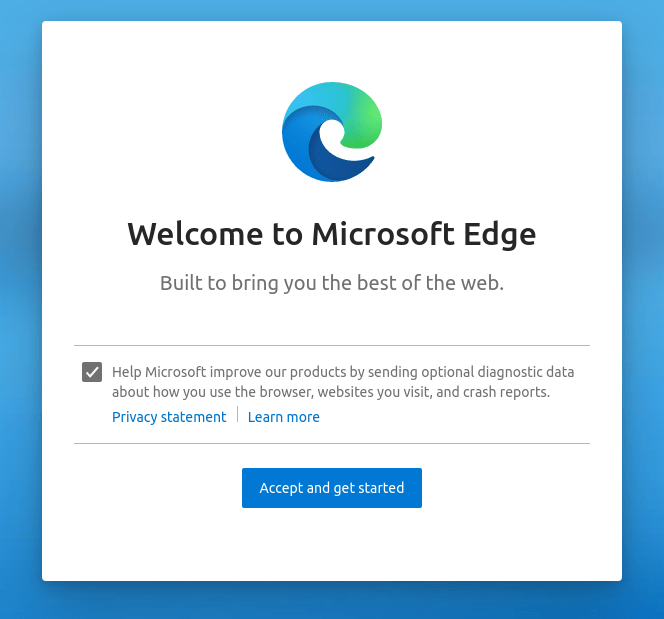How To Install Microsoft Edge on Rocky Linux 10

Microsoft Edge has transformed from a Windows-exclusive browser into a powerful, cross-platform web solution that Rocky Linux users can now enjoy. This comprehensive guide walks you through multiple installation methods, configuration options, and troubleshooting techniques to successfully deploy Microsoft Edge on your Rocky Linux 10 system.
Rocky Linux users seeking a robust browsing experience will find Edge particularly appealing due to its Chromium-based architecture, seamless synchronization capabilities, and extensive Chrome Web Store compatibility. Whether you’re a system administrator managing enterprise deployments or a desktop user exploring browser alternatives, this guide provides the expertise needed for successful Edge installation and optimization.
Prerequisites and System Requirements
System Requirements
Before installing Microsoft Edge on Rocky Linux 10, verify your system meets the essential hardware specifications for optimal performance. Your Rocky Linux 10 installation requires a minimum of 4GB RAM, though 8GB is recommended for smooth multitasking and multiple tab management. The browser installation consumes approximately 1GB of disk space, including room for future updates and cached data.
Rocky Linux 10 must be running on 64-bit architecture, as Microsoft Edge doesn’t support 32-bit Linux distributions. Your processor should support SSE2 instructions, which includes virtually all modern Intel and AMD processors manufactured after 2001. Additionally, you’ll need sudo or root privileges to install system packages and modify repository configurations.
Pre-installation Checklist
Start by updating your Rocky Linux 10 system to ensure compatibility and security. Execute these commands to refresh your package database and install pending updates:
sudo dnf clean all
sudo dnf updateVerify your Rocky Linux version by running cat /etc/rocky-release to confirm you’re using version 10. Create a backup of important data before proceeding, as software installations can occasionally cause unexpected system behavior. Ensure your internet connection is stable, as the installation process requires downloading packages and repository metadata.
Version Verification
Confirm your system architecture and version compatibility using these commands:
uname -m # Should return x86_64
lsb_release -a # Displays detailed system informationThese verification steps prevent compatibility issues and ensure successful Edge installation on your Rocky Linux 10 system.
Method 1: Installing via Official Repository (Recommended)
Overview of Repository Method
The repository-based installation method provides the most reliable and maintainable approach for installing Microsoft Edge on Rocky Linux 10. This method enables automatic updates through your system’s package manager, ensuring you receive security patches and feature updates seamlessly.
Repository installation offers several advantages over manual package installation, including dependency resolution, version management, and integration with your system’s software management tools.
Step 1: Adding Microsoft GPG Key
Begin by importing Microsoft’s official GPG key to verify package authenticity and prevent tampering during download:
sudo rpm --import https://packages.microsoft.com/keys/microsoft.ascThis command downloads and imports Microsoft’s public key, which the package manager uses to verify that downloaded packages haven’t been modified or corrupted. GPG verification is crucial for maintaining system security and ensuring you’re installing legitimate Microsoft software.
Verify the key import by checking the RPM database:
rpm -qa | grep gpg-pubkeyThis command should display the newly imported Microsoft key in the output, confirming successful key installation.
Step 2: Adding Microsoft Edge Repository
Configure your system to access Microsoft’s official Edge repository by executing this command:
sudo dnf config-manager --add-repo https://packages.microsoft.com/yumrepos/edgeThis creates a new repository configuration file in /etc/yum.repos.d/ that points to Microsoft’s Edge package repository. The repository contains all available Edge versions and receives automatic updates when new releases become available.
Verify repository addition by listing configured repositories:
dnf repolistThe output should display the Microsoft Edge repository among your configured sources, confirming successful repository addition.
Step 3: System Update and Installation
Update your package database to include the newly added Microsoft repository:
sudo dnf updateInstall the stable version of Microsoft Edge using the following command:
sudo dnf install microsoft-edge-stableThe installation process downloads approximately 100-150MB of data, including the Edge browser, required dependencies, and desktop integration files. DNF automatically resolves any dependency conflicts and installs necessary supporting packages.
Monitor the installation progress and confirm when prompted to proceed with the installation. The process typically completes within 2-5 minutes, depending on your internet connection speed.
Step 4: Alternative Version Installation
Install alternative Edge versions if needed for testing or development purposes:
# For Beta version
sudo dnf install microsoft-edge-beta
# For Developer version
sudo dnf install microsoft-edge-devMultiple Edge versions can coexist on the same system, each maintaining separate profiles and configurations. This flexibility allows developers and testers to use different Edge channels simultaneously.
Step 5: Verification and Launch
Verify successful installation by checking the installed package:
rpm -qa | grep microsoft-edgeLaunch Microsoft Edge from the application menu or command line:
microsoft-edgeThe browser should open with the initial setup wizard, confirming successful installation and desktop integration.
Method 2: Direct RPM Package Installation
When to Use Direct RPM Method
The direct RPM installation method is ideal for specific scenarios where repository-based installation isn’t suitable. Use this method for offline installations, single-system deployments, or when you need to install a specific Edge version that might not be available through repositories.
This method is particularly useful for system administrators who need to deploy Edge on systems with limited internet connectivity or strict network policies.
Step 1: Downloading the RPM Package
Navigate to the official Microsoft Edge download page using your existing browser. Select the appropriate Linux (.rpm) package for your system architecture. The download typically ranges from 90-120MB depending on the Edge version selected.
Save the RPM package to a convenient location, such as your Downloads folder or /tmp directory. Note the exact filename for use in subsequent installation commands.
Step 2: Installing via Command Line
Navigate to the directory containing the downloaded RPM package:
cd ~/DownloadsInstall the package using DNF (preferred) or YUM:
sudo dnf install ./microsoft-edge-stable-*x86_64.rpmAlternative installation using YUM:
sudo yum install ./microsoft-edge-stable-*x86_64.rpmThe installation process resolves dependencies automatically and integrates Edge with your desktop environment. Monitor the progress and confirm when prompted to proceed with the installation.
Step 3: Post-Installation Repository Setup
After RPM installation, Microsoft Edge automatically configures its repository for future updates. Verify this setup by checking the repository list:
dnf repolist | grep edgeThis automatic repository configuration ensures you receive future Edge updates through your system’s package manager, maintaining the benefits of repository-based management.
Comparison: Repository vs RPM Method
The repository method offers superior long-term maintenance through automatic updates and seamless integration with system package management. The RPM method provides more control over specific versions and works well for offline installations or systems with restricted internet access.
Choose the repository method for most installations, especially on systems with regular internet connectivity. Use the RPM method for specific deployment scenarios or when you need precise version control.
Post-Installation Configuration and Setup
Initial Browser Launch
Launch Microsoft Edge for the first time using the application menu or command line. The browser presents a welcome screen with several configuration options:
- Privacy settings: Choose your preferred data collection level
- Default browser: Set Edge as your default browser if desired
- Import data: Transfer bookmarks and settings from existing browsers
- Sync setup: Configure Microsoft account synchronization
Take time to review these settings carefully, as they establish the foundation for your browsing experience and privacy preferences.

Microsoft Account Integration
Microsoft account integration enables cross-device synchronization of bookmarks, passwords, and settings. Sign in to your Microsoft account through the browser’s sync settings to enable this functionality.
Benefits of account integration include:
- Seamless bookmark synchronization across devices
- Password and form data backup
- Extension and theme synchronization
- Browsing history access across platforms
Consider privacy implications when enabling sync features, and adjust settings according to your security requirements.
Extension Installation and Management
Microsoft Edge supports extensions from both the Microsoft Edge Add-ons store and the Chrome Web Store. Access extension management through the browser’s menu system:
- Click the three-dot menu icon
- Select “Extensions” from the dropdown
- Choose “Manage extensions”
- Browse available extensions or enable Chrome Web Store access
Popular extensions for Linux users include ad blockers, password managers, and productivity tools that enhance browsing efficiency.
Desktop Integration
Edge integrates seamlessly with Rocky Linux 10’s desktop environment, creating application menu entries and supporting file associations. Customize desktop integration by:
- Creating desktop shortcuts for quick access
- Configuring default file associations for web content
- Setting up MIME type handling for specific file types
- Customizing application launcher integration
Troubleshooting Common Issues
Installation Failures
GPG Key Import Errors: If key import fails, verify internet connectivity and try alternative key servers:
sudo rpm --import https://packages.microsoft.com/keys/microsoft.ascRepository Connectivity Issues: Check firewall settings and DNS resolution if repository access fails:
nslookup packages.microsoft.comPackage Conflict Resolution: Resolve conflicts by updating existing packages before Edge installation:
sudo dnf update
sudo dnf clean allLaunch and Runtime Issues
Browser Crashes: Clear browser cache and reset profile settings if Edge crashes frequently:
rm -rf ~/.config/microsoft-edge/Performance Problems: Disable hardware acceleration in Edge settings if you experience rendering issues or poor performance on older hardware.
Extension Conflicts: Disable recently installed extensions if Edge becomes unstable after extension installation.
Update and Maintenance Problems
Repository Synchronization Failures: Refresh repository metadata if updates fail:
sudo dnf clean metadata
sudo dnf updateVersion Rollback Procedures: Downgrade to previous Edge versions if new updates cause problems:
sudo dnf downgrade microsoft-edge-stableManaging Multiple Edge Versions
Installing Multiple Channels
Rocky Linux 10 supports simultaneous installation of multiple Edge channels. Each channel maintains separate profiles and configurations:
# Install all three channels
sudo dnf install microsoft-edge-stable microsoft-edge-beta microsoft-edge-devStorage considerations: Multiple Edge installations consume additional disk space (approximately 1GB per channel). Monitor available storage when installing multiple versions.
Switching Between Versions
Launch specific Edge versions using dedicated commands:
microsoft-edge-stable # Stable version
microsoft-edge-beta # Beta version
microsoft-edge-dev # Developer versionEach version maintains independent profiles, allowing you to customize settings and extensions differently for each channel.
Security Considerations and Best Practices
Package Verification
Always verify package authenticity using GPG signatures before installation. This prevents installation of modified or malicious packages:
rpm -K microsoft-edge-stable-*.rpmAvoid downloading Edge packages from unofficial sources, as these may contain security vulnerabilities or malware.
Browser Security Configuration
Configure Edge security settings for optimal protection:
- Enable tracking protection in Privacy settings
- Use HTTPS-only mode for encrypted connections
- Configure site permissions carefully
- Enable automatic security updates
Regular security audits of installed extensions and browser settings help maintain system security.
Performance Optimization
System Resource Management
Optimize Edge performance through system-level configuration:
- Memory management: Monitor Edge’s memory usage and adjust tab limits accordingly
- Process management: Use Edge’s task manager to identify resource-intensive tabs
- Storage optimization: Regularly clear cache and temporary files
Browser Performance Tuning
Configure Edge settings for optimal performance:
- Hardware acceleration: Enable or disable based on your graphics hardware
- Background app management: Limit background processes to conserve resources
- Startup optimization: Configure Edge to start with minimal tabs and extensions
Maintenance and Updates
Automatic Updates
Edge updates automatically through Rocky Linux’s package manager when installed via repository. Monitor updates using:
sudo dnf check-update microsoft-edge-stableConfigure automatic updates through your system’s update preferences to ensure timely security patches.
Manual Maintenance
Perform regular maintenance tasks to keep Edge running optimally:
- Cache cleanup: Clear browsing data monthly
- Profile optimization: Remove unused extensions and bookmarks
- Configuration backup: Export important settings and data regularly
Congratulations! You have successfully installed Microsoft Edge. Thanks for using this tutorial for installing the Microsoft Edge web browser on your Rocky Linux 10 system. For additional help or useful information, we recommend you check the official Microsoft website.